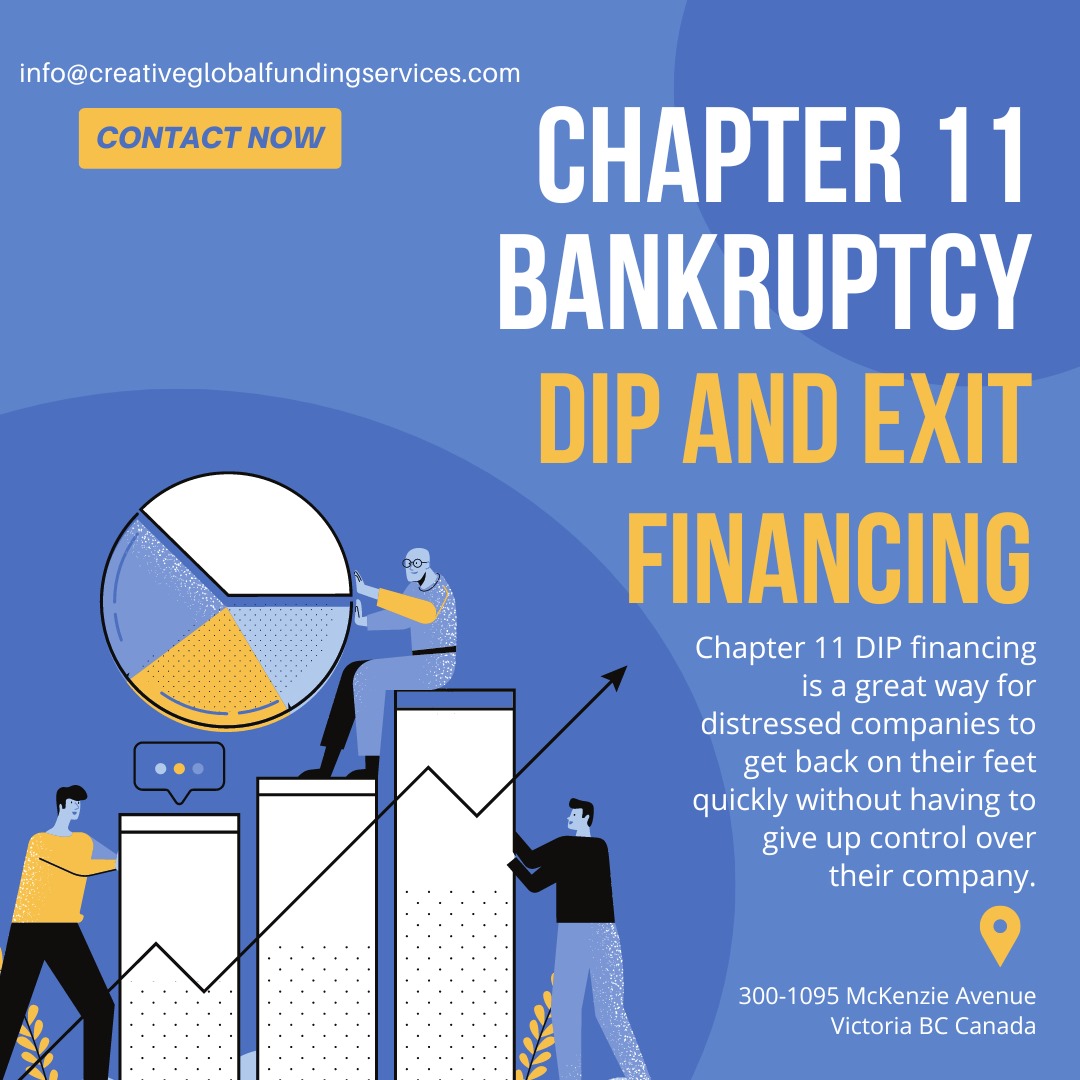Chapter 11 Finance – DIP and Exit Financing is a great way for distressed companies to get back on their feet quickly without having to give up control over their company.
In the Chapter 11 context, debtors often have to compete with other potential buyers for the right to purchase and operate the debtor’s business. Debtors will often require the lender to pay off certain unsecured claims and reduce any remaining balances owed by other creditors. Exit finance can be accomplished through two different structures. The “Assumption Agreement” is used when the lender is willing to take over all or part of the debtor’s existing loan and extend it on a new basis. An “Asset Purchase Agreement” allows the lender to purchase specified assets from the debtor using proceeds from financing provided by it
Debtor in Possession: Chapter 11 Finance
The Debtor in Possession financing structure is a common exit strategy for distressed companies. It allows the debtor to take over control of their business, while still giving them time to restructure their debts outside of bankruptcy court. This can be done through an existing loan modification (extending an existing loan), or buying assets from creditors at fair market value.
Debtors have to compete with other potential buyers to purchase and operate the debtor’s business. Chapter 11 Finance
In the Chapter 11 context, debtors often have to compete with other potential buyers for the right to purchase and operate the debtor’s business. This is usually a good thing for debtors, because it can help them get a better price for their business.
In addition, if an exit financing package includes assumption of liabilities or other conditions that would otherwise be difficult or impossible for other bidders to meet (e.g., requiring a buyer’s assumption of specific contracts), then there may also be some benefits from this type of competition in terms of increasing the likelihood that at least one bid will meet all requirements necessary for approval by creditors’ committees and courts overseeing bankruptcy cases
Debtors will often require the lender to pay off certain unsecured claims and reduce any remaining balances owed by other creditors. Chapter 11 Finance
Debtors will often require the lender to pay off certain unsecured claims and reduce any remaining balances owed by other creditors. This can be done in one of two ways: either by paying off a percentage of each creditor’s claim or by negotiating a payment schedule with each individual creditor. If a debtor has decided to pay off its unsecured creditors, it will have to use its own funds for this purpose–the lender cannot simply write off these obligations as part of its exit financing package.
Exit finance can be accomplished through two different structures. DIP and Exit Financing. Chapter 11 Finance
The exit finance can be accomplished through two different structures. The first is the assumption agreement, which is a contract between the debtor-in-possession and its lender or other purchaser of its assets. The second is an asset purchase agreement, which is a separate contract between the debtor-in-possession and its lender or other purchaser of its assets.
The “Assumption Agreement” is used when the lender is willing to take over all or part of the debtor’s existing loan and extend it on a new basis.
The “Assumption Agreement” is used when the lender is willing to take over all or part of the debtor’s existing loan and extend it on a new basis. In this case, the original creditor assumes liability for all or part of the debt and extends it on a new basis. For example, if you had an $80,000 promissory note with Bank A that matured in March 2010 and you could not pay back your loan, they might allow another bank (Bank B) to assume their liability under this agreement so that they could still collect from you even though your original contract was not paid off by its due date.
An “Asset Purchase Agreement” allows the lender to purchase specified assets from the debtor using proceeds from financing provided by it.
An “Asset Purchase Agreement” allows the lender to purchase specified assets from the debtor using proceeds from financing provided by it. The debtor will continue to operate its business as usual, but now it will lease back these assets from the lender. The lender will receive a return on its investment through payments from the debtor and an additional percentage of any profits generated by those assets going forward.
Chapter 11 DIP financing is a great way for distressed companies to get back on their feet quickly without having to give up control over their company
If you’re looking to get your company back on its feet, but don’t want to give up control of the company, Chapter 11 DIP financing may be right for you. It allows a debtor in possession (DIP) lender to provide capital and financial assistance during the reorganization process.
Sometimes called “exit finance,” DIP financing allows distressed companies to continue operations without having to give up control over their business operations.
Conclusion: Chapter 11 Finance – DIP and Exit Financing
The Chapter 11 DIP financing structure is one of the most common exit strategies for distressed companies. It allows companies to get back on their feet quickly without having to give up control over their company. If you’re interested in learning moe about this type of financing, contact us today.
To find about more about our firm please visit: https://creativeglobalfundingservices.com/cfg/who-we-are/
- “Chapter 11 Bankruptcy Basics” from the United States Courts: https://www.uscourts.gov/services-forms/bankruptcy/bankruptcy-basics/chapter-11-bankruptcy-basics
- “Debtor in Possession Financing: What it is and How it Works” from the Turnaround Management Association: https://turnaround.org/debtor-possession-financing-what-it-and-how-it-works
- “Exit Financing: What It Is and How It Works” from Investopedia: https://www.investopedia.com/terms/e/exit-financing.asp
- “A Guide to Corporate Bankruptcy: Chapter 11” from Forbes: https://www.forbes.com/advisor/credit-cards/corporate-bankruptcy-chapter-11/
- “Restructuring & Turnaround Services” from PwC: https://www.pwc.com/us/en/services/consulting/strategy/restructuring-turnaround-services.html
